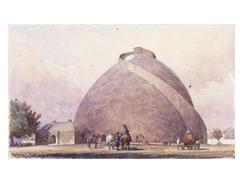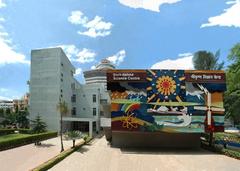Raj Bhavan Patna Visiting Hours, Tickets, and Historical Significance
Date: 03/07/2025
Introduction
Raj Bhavan Patna, the official residence of the Governor of Bihar, stands as a monumental emblem of the state’s historical, cultural, and political legacy. Established in the early 20th century during the creation of modern Bihar, it not only reflects the grandeur of British colonial architecture but also serves as a living testament to the region’s administrative evolution. Whether you are a history enthusiast, architecture admirer, or cultural traveler, this guide provides comprehensive information about Raj Bhavan’s history, architectural features, estate layout, visiting protocols, and nearby attractions—ensuring an enriching and responsible visit (Raj Bhavan Patna: Historical Significance, Visitor Information, and Nearby Attractions).
Table of Contents
- Introduction
- Historical Background and Political Evolution
- Architectural Features of Raj Bhavan Patna
- Estate Layout
- Visitor Information
- Nearby Attractions
- Cultural Significance and Urban Impact
- Frequently Asked Questions (FAQs)
- Practical Visitor Tips
- Conclusion
- References
Historical Background and Political Evolution
Foundation and Early Construction
Raj Bhavan’s foundation stone was laid by Lord Charles Baron Hardinge in 1913, following the separation of Bihar from the Bengal Presidency in 1912. The estate was inaugurated in 1916, forming part of a newly-planned administrative capital that included other colonial landmarks like the Patna High Court and Old Secretariat (Raj Bhavan Patna: Historical Significance, Visitor Information, and Nearby Attractions). The choice of site and urban layout were pivotal in shaping New Patna, with major roads such as Bayley, Hardinge, and Gardiner radiating from the estate.
Political Context and State Formation
With Bihar’s emergence as a separate province, Raj Bhavan became the official residence of the Lieutenant Governor, later serving as the seat for the Governor of Bihar. Figures like Sir Charles Stuart Bayley played a crucial role in the formation of Patna’s civic and administrative identity (Raj Bhavan Patna: Historical Significance, Visitor Information, and Nearby Attractions). The estate continues to host state functions, ceremonies, and visiting dignitaries, cementing its role in Bihar’s governance.
Symbolism and Legacy
Raj Bhavan was designed to restore Patna’s ancient prominence, bridging its glory as Pataliputra with its modern administrative role. It remains a symbol of authority, continuity, and cultural pride, reflecting colonial architectural ideals while adapting to contemporary needs (Cultural Significance and Urban Impact).
Architectural Features of Raj Bhavan Patna
Design and Style
Designed by Joseph Fearis Munnings, Raj Bhavan exhibits a stripped neo-classical style with Palladian influences. The building’s symmetry, minimal ornamentation, and functional elegance are hallmarks of this architectural approach (Raj Bhavan Patna: Architectural Marvel, Estate Layout & Visitor Guide).
- Structure: A three-storied brick building with plaster finish and a hipped roof of Allahabad tiles.
- Facade: Features clean lines, column-supported porticoes, and large windows for natural light.
- Interior: The ground floor houses the Governor’s Secretariat and Durbar Hall; upper floors have reception rooms and formal dining spaces (Wikiwand).
Estate Layout
The estate covers nearly 100 acres, enclosed by a compound wall and approached via tree-lined drives. Landscaped gardens, designed in collaboration with experts from Allahabad, feature both native and exotic flora. Notable elements include:
- Main Entrance and Approach: Grand gate with police barracks and a prominent statue of Dr. Rajendra Prasad.
- Desh Ratna Marg: A ceremonial avenue connecting Raj Bhavan to the Patna Secretariat (Raj Bhavan Patna: Architectural Marvel, Estate Layout & Visitor Guide).
- Estate Evolution: In 1970, part of the grounds was donated for the creation of the nearby botanical garden and zoo.
Heritage and Environmental Integration
The estate’s design balances governance with green space, contributing to Patna’s environmental and cultural landscape. Recreational features, such as historical tennis courts and expansive lawns, continue to be used for official and public events on special occasions.
Visitor Information
Visiting Hours and Entry
- Public Access: Raj Bhavan Patna is generally closed to the public except during special open days, state holidays, or official events.
- Visiting Hours: When open, timings are typically from 10:00 AM to 4:00 PM.
- Entry Protocols: Visitors must carry valid ID and may be subject to security checks. Prior registration through the official website is usually required.
Tickets and Guided Tours
- Tickets: Entry is free on open days; prior permission is required for group or educational visits.
- Guided Tours: Available during special events, offering insights into the estate’s history and architecture.
Accessibility
The estate is accessible via Bailey Road and is well-connected by public transport. Walkways and facilities accommodate visitors with mobility needs.
Photography and Etiquette
Photography is permitted in exterior and garden areas but may be restricted indoors. Visitors are expected to dress modestly, maintain decorum, and respect official proceedings (Cultural Significance and Urban Impact).
Nearby Attractions
Raj Bhavan’s central location allows easy access to several of Patna’s key historical and cultural sites:
- Patna High Court: Colonial-era judicial landmark.
- Old Secretariat: Historic government building.
- Sanjay Gandhi Biological Park: Botanical garden and zoo created from part of Raj Bhavan’s estate.
- Golghar: Iconic granary with panoramic city views.
- Bihar Museum: Modern museum showcasing the state’s heritage.
- Kumhrar: Archaeological site of ancient Pataliputra (Patna Tourism Blog; Goxpedia; Local Tourism).
Cultural Significance and Urban Impact
Raj Bhavan is not just a seat of governance—it is a cultural beacon, linking Patna’s ancient past with its modern identity. The estate hosts official ceremonies, cultural events, and exhibitions that reinforce its role in Bihar’s ongoing narrative (Cultural Significance and Urban Impact).
Frequently Asked Questions (FAQs)
Q1: What are the visiting hours for Raj Bhavan Patna?
A: Typically 10:00 AM to 4:00 PM on designated open days. Confirm via the official website.
Q2: Is there any entry fee?
A: Entry is generally free during public events; prior registration may be necessary.
Q3: Can I take photographs at Raj Bhavan?
A: Yes, in exterior and garden areas. Photography inside the building is restricted.
Q4: Are guided tours available?
A: Yes, especially during special open days or by prior arrangement.
Q5: Is Raj Bhavan accessible for people with disabilities?
A: Yes, pathways and facilities are generally accessible.
Practical Visitor Tips
- Plan in Advance: Apply for permission 2–4 weeks ahead via the Raj Bhavan Bihar portal.
- Dress Modestly: Respectful attire is required.
- Security: Expect screening; avoid bringing large bags or prohibited items.
- Facilities: Restrooms available on open days; cafes/restaurants are nearby on Bailey Road.
- Combine Visits: Enhance your experience by planning a heritage circuit with nearby sites.
Conclusion
Raj Bhavan Patna remains an enduring testament to Bihar’s political, architectural, and cultural identity. Its stately design, historical significance, and integration within Patna’s urban landscape make it an essential stop for heritage tourism. While interior access is limited, the grandeur of its exteriors, gardens, and proximity to other historical sites offer a vivid journey through Bihar’s past and present. Stay updated on special open days and events through official sources and consider joining guided tours for in-depth exploration.
For real-time updates, travel tips, and interactive heritage content, download the Audiala app and follow Patna heritage channels on social media.
References
- Raj Bhavan Patna: Historical Significance, Visitor Information, and Nearby Attractions
- Raj Bhavan Patna: Architectural Marvel, Estate Layout & Visitor Guide
- Cultural Significance and Urban Impact
- Raj Bhavan Patna Visiting Hours, Tickets, and Heritage Guide
- Patna Tourism Blog
- Goxpedia
- Local Tourism




